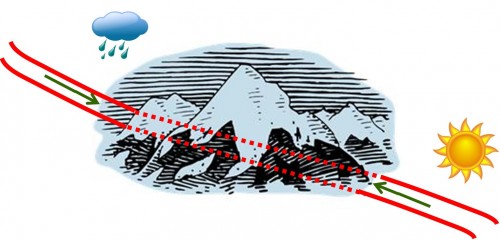In a blog article posted in its original version on this blog [1] and in a revised version on the Communications of the ACM blog [2], I emphasized the relevance of incremental research. Recently Mikkel Thorup sent me some interesting comments, which I am publishing here as the first Guest Column of this blog.
References
[1] Bertrand Meyer: One Cheer for Incremental Research, in the present blog, 10 August 2009, available here
[2] Bertrand Meyer: Long Live Incremental Research, in Communications of the ACM Blog, 13 June 2011, available here.
Guest article by Mikkel Thorup: Funding Great Research
Research foundations want great research projects. However, a while back Bertrand Meyer wrote an interesting blog post: Long Live Incremental Research [2]. With examples he showed that many of the greatest results of research could not possibly be the projected results of great sounding project descriptions. His conclusion is that we should drop the high-flying ambitions from project descriptions, and instead support more incremental research proposals, hoping that great stuff will happen on the way. Indeed incremental research is perfect for research projects with predictable deliverables. However, I suggest the opposite conclusion; namely that we for some of the funding drop the project description.
The basic idea is that foundations should encourage researchers to look for results far better than those that can reasonably be projected. In particular, researchers should be free to follow their inspiration when they see new exiting opportunities. This is not done by tying researchers to incremental projects. Instead we can sometimes switch to result based funding, that is, funding based on results already achieved (with emphasis on the more recent past). Such result based funding is more like rewards for great results, and it offers researchers the perfect incentive to do their very best so as to secure future funding.
Consider a researcher with a history of brilliant ideas taking research in surprising new directions. If we try casting this as a project, the referees will rightly complain: “It is not clear how the applicant will come up with a brilliant idea, nor is it clear what the surprise will be”. With such lack of focus and feasibility, a low project score is expected. If the project description has a predefined weight of, say, 40%, then the overall score will be too low for funding, regardless of the researcher’s established track record of succeeding in unlikely situations. However, research needs great new ideas. Therefore we need some result based funding so that we can support researchers with a proven talent for generating great new ideas even if we do not quite understand how it will happen.
The above problem is often very real in my field of theoretical computer science. Like in other fields, theoretical research is only interesting if it contains surprises (otherwise it is more like development). A project plan would make sense if the starting point was a surprising idea or approach that it would take years to develop, but in theory, the most exciting ideas are often strikingly simple. When first you have such an idea, you are typically close to done, ready to start writing a paper. Thus, if you have a great idea when you apply for a grant, you will typically be done long before you get the grant. The essence of the research is thus the unpredictable search for powerful ideas and insights. The most appropriate project description is therefore just a description of the importance of the area to be researched and the type of results aimed for. The track record shows which researchers have the talent to succeed.
Dropping the how-part of the project description will greatly increase methodological diversity, allowing researchers to use the strategy that has proved most suitable for their area and their own talent and skills. As a simple example, Bertrand suggested funding incremental research, hoping that great surprising things would turn up on the way. My strategy is the opposite. I try to spend as much time as possible on overly ambitious targets. Most of the time I fail, but I rarely come home empty-handed, for by studying the unknown I nearly always discover something new, sometimes even more interesting than the original target. From the perspective of ambition, I see it as an advantage that I minimize time spend on easy targets, but foundations seem to prefer that you take a planned path with some guaranteed targets on the way. The point here is not to argue whether one strategy is superior to the other, but rather to embrace the diversity of strategies that may work depending on the area and the individual researcher.
Perhaps more seriously, if a target is hard to achieve, it may be because it requires a crazy approach that would not look reasonable to anyone else, but which may work for a researcher thanks to his special talents and intuition. Indeed I have often been positively surprised seeing how others succeeded using an approach I had myself dismissed. As a project, such crazy approaches would fail on perceived feasibility, but the point in result based funding is that researchers are free to use whatever approach they find most efficient. Funding is given to those who prove successful. This gives the perfect incentive to do great work, securing future funding.
Result-based funding would also reduce resources needed to evaluate applications. It is very hard for a general panel to evaluate the methodology and success probability of a project. Moreover, it requires an intimate knowledge of a field to evaluate how big a difference a result would make relative to what is already known. However, handling published results, we know what happened and we can rely on peer-review for the difference it made to the field. All the panel has to do is to evaluate how the successes meet with the objectives of the foundation.
Let us, as an example, take something like the ERC Advanced Investigator Grant which welcomes high risk high gain research. It would seem that aiming for surprising breakthroughs in an important area would fall well within this scope. Having researchers with proven skills explore the area and follow their inspiration may be the optimal strategy. Uncertainty about what they would find should not be worse than high risk. In fact, based on past performance, it may be safe to assume that they will discover something interesting if not ground-breaking. However, when projects are scored on focused feasibility, such projects will fail even if their expected return is very high. It has to be possible to get a high overall score for promising research even if standard project parameters like focus and feasibility would be counterproductive. At the end of the day, what we want are results, not project descriptions, so what should determine the overall score is which proposal is expected to yield the greatest results.
Long live great research!
Mikkel Thorup
VN:F [1.9.10_1130]
Rating: 10.0/10 (1 vote cast)
VN:F [1.9.10_1130]
Rating: +2 (from 2 votes)


 Informatics Europe
Informatics Europe LASER summer school
LASER summer school Propulsion Academy
Propulsion Academy